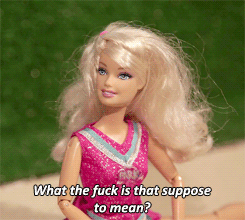Ominous Howled Rendition Of "Silent Night" Recorded In The Woods At 1AM This Morning.
Ominous howled rendition of "Silent Night" recorded in the woods at 1AM this morning.
More Posts from Kuoriainen and Others

No, no, this isn't an AI-generated image! It's a 220 million-year-old petrified log located in Petrified Forest National Park, Arizona, USA. This park is famous for its vast petrified wood deposits. Petrified wood forms when minerals replace the wood fibers over millions of years, resulting in fossilized wood that can be as hard and colorful as gemstones. The log in the picture is entirely replaced by quartz crystals, making it sparkle in the close-up view. This log, dating back to the Late Triassic Period, about 225 to 207 million years ago, serves as a fascinating reminder of the ancient forests that once covered this area.
the group chat when i ask whos available to hang out next week










Boop.
Love is the best scent #38.
Here she did the same exactly one year earlier.

there's a really funny 3d printing controversy going on btw.
if you don't know, there's a very popular 3d printing model out there called "benchy". this is used for benchmarking your 3d printer because it's a difficult print and will help test it out.

this is so widely used that people make their own little versions of it, remixing the 3d model to make benchy look cooler and stuff. however, a new company owns the benchy license. they are sending copyright takedowns to all those who wrongfully uploaded the benchy model.
of course, this is pissing off the 3d printing community greatly. everyone loved benchy and have used it for years. so someone on reddit decided to make a new model that is designed as a 3d printing stress test. one that works a lot like benchy, and people are freely able to edit it as they please. you know what they called it?

boaty.
House intruders (don’t call the police)





Well those are allllmost done
(X)
The significance of plot without conflict
In the West, plot is commonly thought to revolve around conflict: a confrontation between two or more elements, in which one ultimately dominates the other. The standard three- and five-act plot structures–which permeate Western media–have conflict written into their very foundations. A “problem” appears near the end of the first act; and, in the second act, the conflict generated by this problem takes center stage. Conflict is used to create reader involvement even by many post-modern writers, whose work otherwise defies traditional structure.
The necessity of conflict is preached as a kind of dogma by contemporary writers’ workshops and Internet “guides” to writing. A plot without conflict is considered dull; some even go so far as to call it impossible. This has influenced not only fiction, but writing in general–arguably even philosophy. Yet, is there any truth to this belief? Does plot necessarily hinge on conflict? No. Such claims are a product of the West’s insularity. For countless centuries, Chinese and Japanese writers have used a plot structure that does not have conflict “built in”, so to speak. Rather, it relies on exposition and contrast to generate interest. This structure is known as kishōtenketsu.
Keep reading
-
 jesterfurby liked this · 1 week ago
jesterfurby liked this · 1 week ago -
 rootbeer-queer reblogged this · 1 week ago
rootbeer-queer reblogged this · 1 week ago -
 giorno-has-a-gun reblogged this · 1 week ago
giorno-has-a-gun reblogged this · 1 week ago -
 animemangalover4321 liked this · 1 week ago
animemangalover4321 liked this · 1 week ago -
 8cookie reblogged this · 1 week ago
8cookie reblogged this · 1 week ago -
 8cookie liked this · 1 week ago
8cookie liked this · 1 week ago -
 polyamorousmothperson reblogged this · 2 weeks ago
polyamorousmothperson reblogged this · 2 weeks ago -
 rootbeer-queer liked this · 2 weeks ago
rootbeer-queer liked this · 2 weeks ago -
 stargirl1331 reblogged this · 2 weeks ago
stargirl1331 reblogged this · 2 weeks ago -
 flying-potato2 reblogged this · 2 weeks ago
flying-potato2 reblogged this · 2 weeks ago -
 theannoyingkea liked this · 2 weeks ago
theannoyingkea liked this · 2 weeks ago -
 pngin-lvr reblogged this · 3 weeks ago
pngin-lvr reblogged this · 3 weeks ago -
 pngin-lvr liked this · 3 weeks ago
pngin-lvr liked this · 3 weeks ago -
 vikith21 liked this · 3 weeks ago
vikith21 liked this · 3 weeks ago -
 beingobscureclearly liked this · 3 weeks ago
beingobscureclearly liked this · 3 weeks ago -
 biceptisaurus reblogged this · 3 weeks ago
biceptisaurus reblogged this · 3 weeks ago -
 nerd-bastard liked this · 3 weeks ago
nerd-bastard liked this · 3 weeks ago -
 thisgirlfire liked this · 3 weeks ago
thisgirlfire liked this · 3 weeks ago -
 steelplatedhearts reblogged this · 3 weeks ago
steelplatedhearts reblogged this · 3 weeks ago -
 technicolorgalaxy liked this · 3 weeks ago
technicolorgalaxy liked this · 3 weeks ago -
 ceaselesscontempt reblogged this · 3 weeks ago
ceaselesscontempt reblogged this · 3 weeks ago -
 ceaselesscontempt liked this · 3 weeks ago
ceaselesscontempt liked this · 3 weeks ago -
 gaymergirlgwen reblogged this · 3 weeks ago
gaymergirlgwen reblogged this · 3 weeks ago -
 gaymergirlgwen liked this · 3 weeks ago
gaymergirlgwen liked this · 3 weeks ago -
 bogos-bint3d reblogged this · 3 weeks ago
bogos-bint3d reblogged this · 3 weeks ago -
 xyl3m liked this · 3 weeks ago
xyl3m liked this · 3 weeks ago -
 waitingforanonshittydayinhell reblogged this · 4 weeks ago
waitingforanonshittydayinhell reblogged this · 4 weeks ago -
 profanecow reblogged this · 1 month ago
profanecow reblogged this · 1 month ago -
 flying-potato2 reblogged this · 1 month ago
flying-potato2 reblogged this · 1 month ago -
 diospore liked this · 1 month ago
diospore liked this · 1 month ago -
 fvckw4d reblogged this · 1 month ago
fvckw4d reblogged this · 1 month ago -
 fvckw4d liked this · 1 month ago
fvckw4d liked this · 1 month ago -
 dwellerkraken liked this · 1 month ago
dwellerkraken liked this · 1 month ago -
 error404vnotfound reblogged this · 1 month ago
error404vnotfound reblogged this · 1 month ago -
 1-800-hellyeah liked this · 1 month ago
1-800-hellyeah liked this · 1 month ago -
 pyrriae reblogged this · 1 month ago
pyrriae reblogged this · 1 month ago -
 assragr reblogged this · 1 month ago
assragr reblogged this · 1 month ago -
 seeds05 liked this · 1 month ago
seeds05 liked this · 1 month ago -
 chepsi liked this · 1 month ago
chepsi liked this · 1 month ago -
 mrufki liked this · 1 month ago
mrufki liked this · 1 month ago -
 sigrid-antares reblogged this · 1 month ago
sigrid-antares reblogged this · 1 month ago -
 r0tt1ng-in-my-shell liked this · 1 month ago
r0tt1ng-in-my-shell liked this · 1 month ago -
 wolf-jaws reblogged this · 1 month ago
wolf-jaws reblogged this · 1 month ago -
 aarontigan liked this · 1 month ago
aarontigan liked this · 1 month ago -
 thebarefootking reblogged this · 1 month ago
thebarefootking reblogged this · 1 month ago -
 platypusisnotonfire reblogged this · 1 month ago
platypusisnotonfire reblogged this · 1 month ago -
 spiderbacks liked this · 1 month ago
spiderbacks liked this · 1 month ago -
 momotar-0 liked this · 1 month ago
momotar-0 liked this · 1 month ago -
 drinkswater liked this · 1 month ago
drinkswater liked this · 1 month ago
